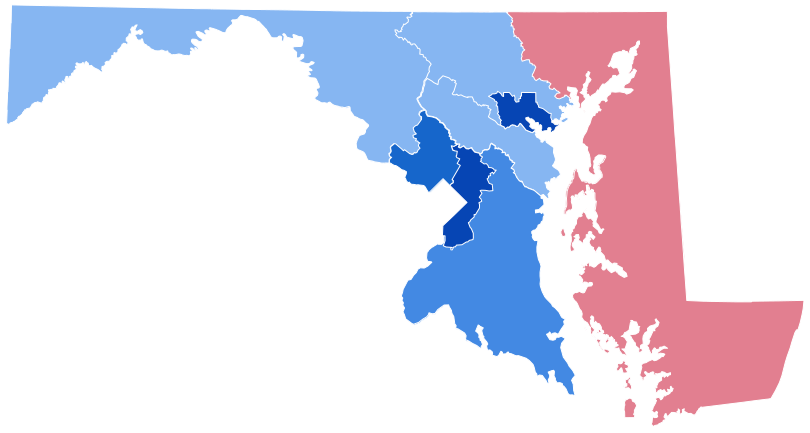Ranked Choice Voting: How It Works

Ranked choice voting — or, as it is sometimes called, an “instant runoff” system — is a way of selecting a clear winner out of a large field of candidates.
In a multi-candidate race, with perhaps five or more names on the ballot, the leader’s total could be in the 30% range or even lower. It’s hard to claim you’re “the people’s choice” if more than two-thirds of them voted for somebody else.
Here’s how ranked choice voting works: Voters rank candidates in their order of preference. If there are five candidates, instead of choosing just one, voters mark their ballots to show their choices in numerical order, as in the following sample. In the dog catcher race, this voter prefers Jones as their first choice, Willis as their second choice, and so on.

After all ballots are cast, the first-place votes are tallied, and if any candidate has more than 50% of the total, the counting ends and that candidate is the winner. Easy enough, right?
But what happens if nobody clears that 50% mark? In a ranked choice election, the candidate with the fewest first-place votes is eliminated. That eliminated candidate’s voters’ second-choice votes are then distributed among the remaining candidates and added to their first-round totals. If there is still nobody with more than 50% the process is repeated, with third- and lower-place choices added in as more candidates are eliminated, until one candidate has more than half the total votes.
Ranked choice voting has been adopted by several jurisdictions across the United States, including for federal elections in Alaska and Maine. Hawaii has passed legislation to allow ranked choice voting in federal special elections and some local elections. In other states, ranked choice has been adopted by municipalities, including New York City; San Francisco; Minneapolis and St. Paul, Minnesota; Santa Fe, New Mexico; and Takoma Park here in Maryland. In several other states, including Virginia, the option has been approved for local elections, but hasn’t been put into practice as of this writing.
One advantage of a ranked choice system is that a voter can in good conscience pick a Green, Libertarian, or other minor-party candidate without worrying that they’re throwing away their vote. Ranked choice means those voters no longer have to “hold their noses” and vote for a candidate who isn’t their first choice, but whom they prefer to the other major-party choice. For example, in the presidential election of 2000, if third-party candidate Ralph Nader’s voters had listed their second choices, there’s a good chance Al Gore would have been elected instead of George W. Bush. That’s just one case where a third-party candidate got more votes than the margin between the two major party candidates. Ranked choice might have changed the results of many of those elections.
In fact, the system may give some of those third-party candidates a viable chance at winning an election. And it does give their voters more of a say in the ultimate outcome of a contest than the current “first past the post” system, where (unless there’s some provision for a runoff) the only votes that matter are those cast for the top vote-getter — even if that is only 25% of the total vote.
Ties are still possible — the Hugo Awards, given by members of the annual World Science Fiction Convention, have used ranked choice voting since 1968, and there have been several ties in that time. But an expensive runoff election, as we just saw in the Georgia Senate race, is not as likely to be necessary. (In the Hugos, ties simply mean there are two trophies awarded in those categories.) But in national or state elections — even in most large municipalities — there are usually enough votes cast that exact ties are unlikely.
Probably the most common argument against ranked choice voting is that some voters find it confusing. Those voters are of course free to vote for only one candidate, as in the current system to which they’re accustomed. While that deprives them of a say if their first choice is eliminated, it really isn’t all that different than a voter deciding not to vote, or voting for a write-in, in a race where none of the candidates appeal to them. Some opponents also argue that the practice is undemocratic, especially if a candidate who was second or third in the first round is the ultimate winner — although the system is designed to ensure that the winner has the widest support among all the choices on the ballot. In the long run, it seems a good bet that voters will come to understand the ranked-choice system and how to use it effectively.
The long-term future of ranked choice voting is hard to predict. At present, three states, plus dozens of local jurisdictions in 12 other states, have adopted ranked choice, although not all of them have put it into practice. Other areas are skeptical or strongly oppose it. Florida passed a law in April of 2022 to bar ranked choice in all elections, including local ones. Other states have not yet acted either to adopt or prohibit the system.
It will probably require more experience with the system around the country to determine the future of ranked choice. But it would certainly appear — at least on the primary election level — to give voters a fuller opportunity to consider candidates outside the two-party system, and to avoid the “lesser of two evils” trap we see too often under the current system.
Peter Heck is a Chestertown-based writer and editor, who spent 10 years at the Kent County News and three more with the Chestertown Spy. He is the author of 10 novels and co-author of four plays, a book reviewer for Asimov’s and Kirkus Reviews, and an incorrigible guitarist.
Common Sense for the Eastern Shore







